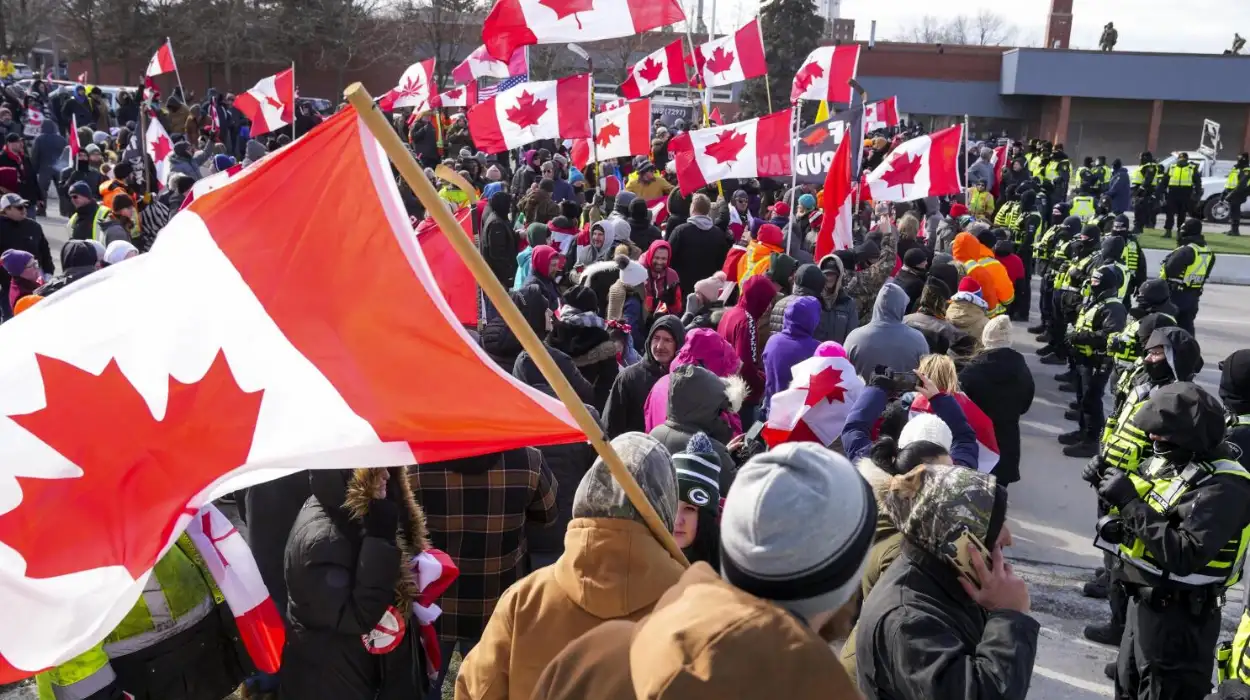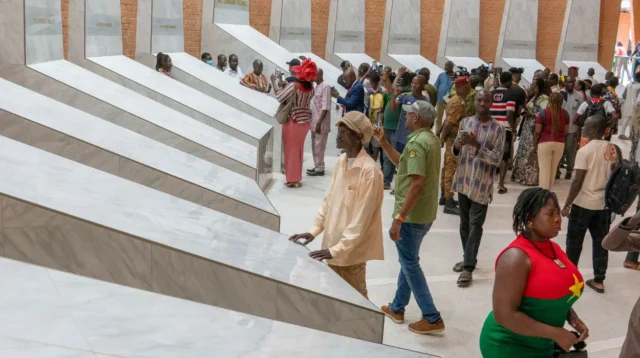The summer of 2025 has been marked by a continuous peaceful protest movement in the United States and Canada that is motivated by the demand of racial justice, democratic reform, environmental responsibility and migration rights.
Despite a reduction in the overall rate of demonstrations as compared to previous levels, civic participation is still high and both nations still experience massive mobilization of the populace.
The most recent statistics provided by the Armed Conflict Location and Event Data Project (ACLED) estimate that in July there were approximately 1,500 peaceful protests in 47 states of the United States, a significant 44 percent decrease over June, but nevertheless, significantly higher than in 2024. In Canada, the number of protest events was recorded to be 87 in the same period, which constitutes a 29 percent reduction. This temporary decline is associated with cyclical protest patterns, as retro- bases of activist formations are still functioning in both countries.
Dynamics Shaping Peaceful Protest Movements
The patterns of mobilization in 2025 display a mix of strategic, large-scale events and continuous localized activism. Individual initiatives like the July 2020 protest called Good Trouble, in honor of the civil rights legacy, are illustrative of the symbolic power of demonstration even in times when crowds get smaller. Past mass protests in April attracted tens of thousands meaning it has the potential to scale when political or social flashpoints appear.
These movements are characterized by the constant controversy of civil liberties, immigration and executive power in the political sphere. The crackdowns of the undocumented migrants, the proposed voting restrictions in various states of the U.S. and the increasing tensions between the federal and provincial jurisdictions in Canada are all the problems that have elicited protest reactions. With changes in institutional trust, the protest movements will change accordingly responding to the developments in the country, defining their strategies and target audience.
Urban Versus Rural Patterns And Societal Impact
The majority of protests are still centred in the city centres, especially in cities such as Washington, Los Angeles, Toronto, Montreal, Vancouver, and Edmonton. Urbanization helps people to become more activist because there is much organizing infrastructure, media coverage, and more politically engaged people. A survey carried out by Angus Reid in July 2025 stated that 71 percent of major urban Canadians said they have either witnessed or attended at least one protest in the last three months, versus only 27 percent in the country.
The geographic differences also portray the differences in demographics. Cities have larger populations and are younger in age-cohorts-ensuring that they are more inclined toward protest interests. However, on the contrary, rural people and the older generation are more concerned about disruption and tend to view protests as something politically divisive. These contrasting experiences would lead to the differences in opinion on legitimacy of the protest and its effectiveness as a change-making instrument.
Challenges Facing Peaceful Protest Movements
The authorities of both the U.S. and Canada still have to walk the fine line between peaceful assembly and preserving the order in society. In Canada, a new investigation has cropped up over perceived discrepancies in the way police treat various protest groups. A June 2025 Abacus Data poll revealed almost two-thirds of Canadians felt police provided special treatment based on the political affiliation of protesters.
This image has escalated the community-police tensions especially in anti-pipeline protests and Indigenous led protests. The same worries the case in the United States where police departments have been accused of employing more force during leftist rallies compared to rightist crowds. Such imbalances damage the credibility of the population and increase polarization.
Protest Fatigue And Sustainability
Even though the momentum of protests continues, there are signs of exhaustion. Long-term mobilization since 2020 with growing demands on participants in time and resources have led to reduced attendance at non-peak events. Organizers have the quandary of sustaining energy, finding funds, and retaining interest among people in a saturated media environment and political priorities.
To overcome fatigue, the movements focus more on localized and community-based interventions which are more sustainable than nationwide mass protests. Such minor actions tend to yield certain results like school policy changes or municipal ordinances, which supports the value of ground-up strategies of sustainability in movement over time.
Impact Of Digital Platforms And Misinformation
Digital technology continues to play the main role in organizing protests but brings about complications as well. Social media enables quick dissemination of information and the decentralized movements to organize easily. But it also subjects activists to misinformation campaigns, surveillance, and algorithmic suppression.
Some of the false stories, which are sometimes supported by the state, might turn around the opinion of masses and divide protest movements. It is important that activists constantly check the information, combat disinformation, and change with the environment of online presence. The changing digital environment demands the emergence of new literacy in the area of information security and social interaction especially as governments increase online surveillance in the guise of national security.
Societal And Political Significance Amid Turbulence
Nevertheless, through the struggles, peaceful protests in 2025 remain essential democratic statements and a focal point of political consideration. Analysts note that protests have already managed to influence the discourse on major national questions and shape the course of municipal legislation as well as coerce political leaders to take a stance on controversial issues. Intergenerational political education and civic empowerment is also brought by the visibility of movements.
There is a significant development of cross-border solidarity within the movements across the U.S and Canada. Environmental movements, Indigenous rights movements and migration justice networks are more likely to organize cross-nationally, advance comparable demands, and represent each other. Such transnational collaboration empowers movements and highlights the local and globality of most social issues.
A change in the political engagement among a generation is also observed in these protests. According to the polls given by Pew Research Center, and Environics Institute, Gen Z and younger millennials overwhelmingly approve of protest as an acceptable political expression. More inclined to name climate change, systemic racism, and housing justice as one of the driving forces to act, which indicates that protest politics will continue to be a characteristic of North American civic life over the next few years.
With the shifting landscape of protest, its connection with governance, law and policy is too. Governments are being pressured to do more than simply maintain order but to act responsibly and change the system. The success of the peaceful protest, however, by legislation, change of funding, or the transparency of the institutions it seeks to affect, is highly dependent on the responsiveness of the democratic systems it tries to impact.
In the United States and Canada, peaceful protest has turned into a gauge of and driver of political transformation in 2025. Its trajectory reveals much about the state of civic life, institutional responsiveness, and the contested meanings of justice in North America. With the changing political climate and the appearance of new reasons, the evolution of the movements and how they manage to remain effective will be critical in comprehending the future of democratic participation on the continent.





